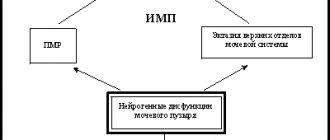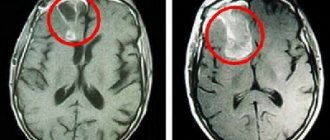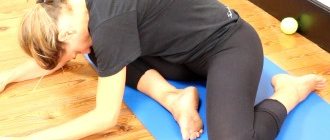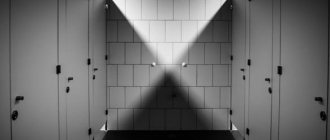All materials on our site are presented in a simple and understandable form, easy to understand and designed to help you solve sensitive problems related to your health and physical performance!
Biofeedback therapy is a technique that helps your child learn to control different parts of their body that are not usually considered to be under conscious control. The goal of biofeedback therapy is to help your child better understand how their body works and how to control it in healthier ways to get rid of illnesses. Biofeedback therapy is an opportunity to achieve better results in a shorter period of time. An opportunity for a child to understand what processes and what exactly is happening in his body. Any pain, negative emotion or stress is expressed in changes in physiology (GSR, plethysm, breathing, encephalogram). By changing (controlling) your physiology, you can calm pain, reduce stress and the manifestation of negative emotions.
The human brain has the ability to change the parameters of its activity thanks to its very interesting property - neuroplasticity.
These changes in the activity of the brain and nervous system to restore their functions through qualitative and quantitative changes are possible under the influence of experience. This explains their ability to restore lost connections after certain injuries (a person can learn to walk and talk again after suffering a stroke and various physical injuries). The human brain can change not only under the influence of damage. Other manifestations of neuroplasticity are directly related to brain development, more precisely to the mechanisms responsible for memory, learning and other processes.
Biofeedback therapy method.
The biofeedback therapy method uses neuroplasticity to achieve absolutely balanced, consciously regulated brain activity by a person. The physiological basis of this method is the exceptional plasticity of the brain, the procedural basis is conditioned reflex learning or conditioning. The use of these unique methods gives remarkable results both in the treatment of many chronic diseases, clinical syndromes and symptoms, and when working with practically healthy people, to reduce the level of anxiety, stress, phobias and fears, etc.
The brain retains plasticity throughout life, but it is at its maximum at an early age.
The structure of the brain is formed to a greater extent in the first years of life than in any other period. Today we know that adolescence is an equally significant period for the reorganization of brain structure and neuroplasticity. Neuroplasticity of the brain increases during adolescence and remains at this relatively high level until adulthood. The adult brain is certainly not as capable of change as the adolescent brain, but the brain's lower capacity for neuroplasticity does not mean its complete absence!
During adolescence, the brain is particularly sensitive to environmental influences. During this period, the child learns intensively and easily. For the developing brain, the acquisition of knowledge and skills is a basic and completely natural process.
Based on the above, we can clearly conclude that biofeedback therapy is most effective in childhood. Its essence lies in teaching the brain new ways of working, allowing it to respond to proposed situations in an unusual, but desirable way for a child or adolescent.
Breathing and training with biofeedback (BFB)
The importance of the breathing process is difficult to overestimate. Breathing is one of the vital functions of the body. The nature of breathing speaks about a person’s condition: the depth, rate of breathing, and the relationship between the phases of the respiratory cycle determine a number of psychophysiological processes. Therefore, it is important to be able to arbitrarily regulate breathing parameters. Breathing exercises, as they are automated, help to increase the strength and endurance of the respiratory muscles, increase the efficiency of the respiratory system, and also improve lung ventilation. It is known that at rest, in a sitting position, in an adult, the number of respiratory movements (RR) is 16-20 per minute. In physically trained people, this figure is reduced to 8-12 respiratory movements per minute.
In general, the respiratory rate, as well as the duration of individual phases of the respiratory cycle, reflects the state of health and the level of efficiency of the respiratory system, the reserve capabilities of the body, that is, its life potential. Therefore, various medical, correctional (speech therapy), health and sports programs involve certain breathing training in order to reduce the breathing rate and develop the skill of longer exhalation (speech exhalation).
The breathing process can be trained, especially with the use of modern simulators and biofeedback complexes (BFB). We can control the duration and depth of inhalation, exhalation and the duration of pauses after inhalation and exhalation. The depth and frequency of breathing also depend on the strength and endurance of the main respiratory muscles (diaphragm muscles, external and internal intercostal muscles). The better developed these muscles are, the more economically the respiratory system works, the greater its reserve capabilities.
Training the respiratory muscles leads to faster and better development, expansion of the chest excursion, increase in respiratory reserve, power of the breathing apparatus, volume of the alveolar reservoir, speed of air movement during inhalation and exhalation. All this, along with an increase in the diffusion surface of the lungs, creates conditions for a decrease in breathing, to increase the utilization of oxygen in the lungs, which in turn leads to a decrease in the volume of air that must enter the lungs.
Control of the respiratory process takes into account the energy cost of breathing associated with the work of the respiratory muscles. Minimizing energy consumption is thus associated with maintaining the ratio of inhalation and exhalation within optimal limits.
It is known that there is a relationship between the phase of the respiratory cycle and heart rate. This phenomenon is called respiratory arrhythmia (RAC). Inhalation causes depression of the vagus nerve and acceleration of the heart rate, and exhalation causes irritation of the vagus nerve and slows down cardiac activity.
A certain relationship has been established between mental activity and respiratory arrhythmia. Mental stress usually causes an inhibitory effect on the centers of the vagus nerve. For example, during rest after mental fatigue, respiratory arrhythmia is most clearly expressed; and vice versa, in a state of wakefulness, during mental work or excitement, respiratory arrhythmia disappears. Thus, the parasympathetic system plays a decisive role in the origin of this phenomenon.
Two methods are used to quantify respiratory arrhythmia:
- Calculation of the average difference between the maximum and minimum values of cardiointervals in the respiratory cycle (absolute value of DAS)
- Spectral analysis of heart rhythm (power or amplitude of the spectrum in the frequency range corresponding to the duration of the respiratory cycle).
It has been shown that DAS is observed mainly with a slow pulse and with slow breathing, and with an increase in both, it becomes weaker. Under the influence of physical movements, when the influence of the sympathetic nerve predominates, DAS also disappears. Slow deep breathing contributes to a clear manifestation of respiratory arrhythmia of the heart, and pauses between exhalation and inhalation intensify it.
Principles of teaching proper breathing
Correct human breathing is natural breathing; functioning on the basis of a comprehensively developed respiratory apparatus, it ensures optimal gas exchange under a wide range of functional loads, creating the most favorable opportunities for the body to adapt to changing environmental conditions. Diaphragmatic breathing activates the parasympathetic nervous system, promoting relaxation and is a very effective therapeutic tool for panic attacks, anxiety, problems falling asleep, logoneurosis, asthma, etc.
This definition must be supplemented with a number of details: the main muscle of proper breathing is the diaphragm; correct breathing is carried out only through the nose, while the shoulders remain motionless, and the lower ribs diverge forward and to the sides. In addition, the basis of proper breathing is the optimization of the ratio between the “inhalation - exhalation” phases, which ensures the best supply of oxygen to the body. Regulating the ratio of inhalation and exhalation is one of the important factors in ensuring optimal functioning of the respiratory system. In physiology, the most effective respiratory cycle is considered to be one in which the exhalation is longer than the inhalation. On average, the exhalation phase should be twice as long as the inhalation phase.
Features of each phase of proper breathing:
The first phase is exhalation.
Properly organized exhalation activates the respiratory muscles and ensures further optimal breathing. Exhalation should be natural, without effort.
Exhale through the nose. It should occur without shocks, in an even, long stream. You should not try to exhale all the air from your lungs to the end; the remaining part of it is necessary for the next pause after exhalation.
The pause should be natural and non-violent. It is the pause that determines the volume of air required for inhalation, depending on the state of the body. If in the first 2-3 weeks after the start of breathing training the pause is still consciously controlled, then later it becomes natural, not determined by consciousness, and will depend on the magnitude of the load and the functional state of the human body. That is why the pause is extremely dynamic, unstable, and sometimes, while performing some task facing a person, it can disappear completely.
The second phase is inhalation.
Inhalation should be natural and only through the nose.
Inhalation should be carried out by lowering the diaphragm, smoothly and silently, until the lower ribs of the chest begin to expand, i.e. due to abdominal breathing.
Inhalation is carried out smoothly, silently, without the slightest strain on the respiratory tract. The pause after exhalation should prompt the moment of a natural desire to inhale, and then the air, due to the spontaneous movement of the ribs and diaphragm, will enter the lungs and fill them as much as required (see figure).
Breathing techniques can be performed in any position. Only one condition is required: the spine must be in a strictly vertical or horizontal position. This makes it possible to breathe naturally, freely, without tension, and fully stretch the muscles of the chest and abdomen. If the back is straight, the respiratory muscles (mainly the diaphragm) can function easily and freely.
The position of the head is also very important: in a sitting position, it should be fixed directly on the neck. This stretches the chest and other parts of the body upward to a certain extent.
Attention:
the neck should under no circumstances be tense!
When performing a breathing exercise, you should breathe through your nose, with your lips slightly closed (but not compressed). It is necessary to pay attention that when inhaling, your shoulders do not straighten or rise.
Using biofeedback technology to develop proper breathing skills
The main goal of the method is to develop the skills of voluntary self-regulation of breathing.
For breathing training carried out using biofeedback methods, the following sensors are used: Breathing sensors, ECG sensors, EMG sensors.
Biofeedback training for breathing regulation includes several stages:
- Preparing for the training course
The preparatory stage includes testing to measure parameters of abdominal, thoracic breathing and heart rate. Most programs use two breathing sensors and display two breathing channels accordingly. After the test, such important indicators as the duration of the respiratory cycle, the ratio of inhalation and exhalation time, the ratio of thoracic and abdominal breathing are determined. These indicators will be used later in the training process. Thus, based on the results of the test session, one can draw a conclusion about the predominant type and frequency of breathing, and build a further training program taking this into account.
- Conducting effective breathing training
The training itself with biofeedback (BFB) can be divided into three key stages.
1) Establishment of abdominal breathing.
The most effective type of breathing is the abdominal type, since with such breathing the lungs are more deeply ventilated, the venous return from the abdominal cavity to the heart is facilitated, and the least effort is expended in terms of energy consumption to carry out the respiratory cycle.
2) Learning rhythmic breathing with prolonged exhalation.
It is known that the rhythm of breathing and the depth of inhalation/exhalation can affect a person’s emotional state. For example, rhythmic, calm breathing reduces the excitability of not only the respiratory center, but also some other centers, for example, the emotional one.
This phenomenon is based on the following psychophysiological mechanism. Inhalation is associated with excitation of the sympathetic nervous system, exhalation with its inhibition. During inhalation, a person’s mental state is activated, and during exhalation, the whole body calms and relaxes. Thus, in order to bring yourself to a state of peace and emotional balance with the help of breathing, you should gradually increase the exhalation phase (including pause) in the respiratory cycle.
3) The actual training of effective breathing.
The goal of training is the predominance of the exhalation phase over the inhalation, provided that breathing exercises do not lead to an increase in sympathetic activity. Therefore, at this stage, breathing training is carried out under the control of heart rate and EMG of the frontal muscles. When breathing is performed correctly, heart rate and EMG should not increase.
At the end of the training session, it is recommended to conduct a monitoring session.
During this session, in a calm state, all signals used in the training are recorded. This session is used to compare breathing, heart rate and EMG readings before and after training. Facebook
What is biofeedback therapy?
Biofeedback (BFE) is a “physiological mirror” that gives the child the opportunity to see and control many of his physiological functions. The biofeedback therapist teaches your child to transfer the unconscious regulation of internal processes into the sphere of the absolutely conscious. Using the most optimal training for each child individually, biofeedback therapy allows the child to learn to control their own breathing, pulse, blood pressure, muscle activity, emotions and even their own fears. Biofeedback therapy is a method that helps a child learn to control various parts of their body that are not usually considered to be under conscious control.
How does a biofeedback session work?
The mere presence of each biofeedback session is relaxation. This is so often needed in busy city life.
Learning to manage your feelings and states in front of a screen is a kind of sport, you feel that you can control the work of your body, change confusion into harmony, these are feelings of confidence and joy. But the main thing that biofeedback training gives is the skill to change your state in any life situation: change anxiety to confidence, fear to calm, confusion to balance. This is that cherished self-regulation when your state depends only on what you want to feel.
The duration of the course is selected individually depending on the complexity of the task and can range from 10 to 40 procedures. Frequency of visits 2-3 times a week. Duration of the procedure is 40 minutes.
Biofeedback therapy for children is aimed at:
- correction of attention disorders in children, improvement of concentration and distribution of attention and switchability
- improvement of cognitive functions (memory, attention, thinking)
- improvement of short-term and long-term types of memory
- development of self-control and perseverance
- improved perception
- normalization of the functional state of the nervous system
- increasing stress resistance
- reduction of emotional tension
- reduction in anxiety levels
- increasing the level of self-organization
- reduction of negative emotional background and acquisition of relaxation skills
- suppression of excessive autonomic activity in response to external stimuli
- training in the skills of muscular and general emotional and mental relaxation
Conducting biofeedback training with children is recommended if the child:
- poor adaptation in kindergarten or school
- attention disorder
- difficulty falling asleep and staying asleep
- excessive fears, anxiety
- nocturnal enuresis
- moodiness, irritability
- anxiety-depressive disorders
- tics and stuttering
- headache
- doctors diagnose vegetative-vascular dystonia or other psychosomatic diseases (neurodermatitis, bronchial asthma)
- parents wish to strengthen the autonomic nervous system for preventive purposes.
The goal of biofeedback therapy is to help your child better understand how their body works and how to control it in healthier ways to get rid of illnesses. The advantage of biofeedback therapy is that it is nonspecific with regard to diagnosis, i.e. allows you to work not with individual diseases, but with the main types of dysfunctions of the body’s regulatory systems - nervous (central, peripheral, autonomic), immune and humoral. The consequence of this is the possibility of correction of almost any non-infectious and non-surgical disorder with biofeedback therapy.
Equipment for biofeedback therapy.
Equipment for biofeedback therapy is special medical equipment: hardware and computer systems for functional biofeedback, with many touch bioparametric sensors and specialized software. Bioparametric sensors attached to certain areas of the body record pulse and respiration rates, brain signals and, if necessary, bioelectrical muscle activity. Information about the functioning of the cardiovascular, motor, central and autonomic nervous systems in a normal state and with existing deviations is received in real time. The received signals are recorded by special equipment, and later, using special software, in an absolutely simple, understandable and accessible form for children - in the form of an image or sound - they are displayed on the monitor.
The influence occurs through certain images, music and other audio/video stimuli. Bioparametric sensors attached to the child's body record changes in physiological parameters in response to these irritations. This gives us a greater understanding of the processes occurring in the child’s body and allows us to exercise voluntary control: first, we teach the child to manage external signals and, ultimately, thanks to this, we will teach the child to recognize, correctly interpret and use internal signals, remembering and controlling his state.
How does biofeedback therapy work with children?
Working with a child takes place in the form of a game and consists of watching a video image or cartoon specially selected in each specific case, taking into account the individual characteristics of the child, and completing tasks based on it. This method is so simple that it is absolutely accessible to children from the age of 5. The biofeedback therapy procedure is absolutely painless and has no side effects; bioparametric sensors attached to the child’s body only take readings without affecting the child’s body. The game form of presentation will maintain children's keen interest in participating in biofeedback therapy and promote the natural development of skills. Children master the ability to balance their emotional swings, identify their emotions and perceive psychological information much faster than children who have not been treated with biofeedback methods.
The child is in a comfortable chair and special bioparametric sensors are attached to his body and head, which record brain activity and various other physiological indicators. This data is processed by a special computer program and provided to the child in the form of visual and audio signals. On the monitor screen, the child can observe how his physiological processes, depicted in pictures, change. With the help of a biofeedback therapy specialist, the child learns to control his body functions.
To achieve certain goals, some rhythms in the child’s brain need to be increased, while others need to be decreased. Therefore, in the tasks that the child performs, the behavior of various characters may change depending on how effectively the child reinforces or suppresses the brain rhythms recorded by the sensors. It is the play motive and excitement of the child that is the most important, key factor that forces the child’s brain to change the nature of its work towards stable states (so that the car continues to move and does not stop, the baby mammoth continues its path, and the flowering meadows do not turn gray). In the process, the child's brain adapts to new ways of working, relying on feedback signals to do this. At its core, the process of Beaus-therapy for children is very similar to the game of “near-far”: if you regularly inform the child how close he is to the intended goal, then very soon, of course, not without some “bumps”, he will find “pirate treasures” "
Depending on the problems and individual characteristics of the child, the specialist identifies those areas of the brain that will be targeted by the main work and biofeedback therapy program, while the main character in this complex process is, of course, the child himself.
Biofeedback therapy maintains a balance between the two hemispheres of the brain, as well as between the nervous and immune systems, thereby influencing physical, emotional, and intellectual processes, ensuring optimal use of all the child’s capabilities.
Hyperactivity or ADHD (attention deficit hyperactivity disorder) is a serious problem and is the most common behavioral disorder in children and adolescents. That is why the main goal of biofeedback therapy for children is: increasing attention, improving memory and enhancing intelligence
The second common problem among children and adolescents is nocturnal and daytime enuresis.
Before starting work using the biofeedback therapy method, first of all, you need to make sure that a child with such a problem does not have any signs of inflammation or disorders of the urinary system (you need to do the appropriate analysis and conduct the necessary examination as prescribed by a nephrologist or urologist). If the child’s genitourinary system does not have pathology, then we can draw a definite conclusion that the transmission of information to the brain about the fullness of the bladder is disrupted, that is, there is partial immaturity of the central nervous system.
The arrival of a newborn child in the family may well lead to problems with incontinence in older children. At the same time, the older child suddenly forgets how to control urination in the form of a conscious or unconscious protest against the seeming lack of attention, love and affection on the part of parents who are fully occupied, first of all, with the newborn. A similar situation very often occurs when a child moves to another school or another unfamiliar kindergarten, or the whole family moves to a new place of residence.
Excessive strictness of parents or guardians and physical punishment, as well as quarrels between parents and, of course, divorce can also lead to problems in the child.
As a rule, the first results after starting biofeedback therapy appear after the tenth day of work. The duration of work with a particular child usually depends on the type of ADHD and the presence of various accompanying disorders.
Children with hyperactivity typically require many more days of work than children without hyperactivity. To work with hyperactive children, it is first necessary to conduct special classes aimed at teaching the child proper breathing and relaxation.
The absence of side effects and reactions makes biofeedback therapy very effective in working with children and adolescents. For productive treatment with biofeedback, a very important factor is required that is specifically related to your child - motivation, that is, his most immediate active desire to get well. However, beneficial results require time and effort for improvements and achievements to be achieved. If your child does not want to follow the instructions of the biofeedback therapist and the assigned tasks, then even if all other conditions are met, there will be no result. Thus, the child's level of motivation is key to the success of biofeedback therapy, as well as the desire to actively participate in the treatment regimen. A high level of motivation can be ensured by a psychological attitude toward recovery, and not only the biofeedback therapist needs to work closely on this during sessions, but also the parents themselves.
Biofeedback therapy is strictly individual, dosed and controlled by a biofeedback therapist during each session throughout the entire treatment and correction course.
We provide a full range of professional services for biofeedback therapy, using all the most advanced techniques known today and the most reliable and scientifically based methods of psychophysiological diagnostics, as well as certified modern medical equipment made in Russia.
Portable electroencephalograph-recorder for neurofeedback, training and rehabilitation with biofeedback:
Electroencephalograph-recorder "Encephalan-EEGR-19/26"
- multi-parametric ( 10 or more
) registration of indicators, allowing you to create and use more effective scenarios of biofeedback procedures in sports, education and science, for special training and rehabilitation - providing professional neurophysiological support with the help of the main software for EEG studies “Encephalan-EEGR”
and additional software - differential diagnosis of epilepsy
- psychophysiological studies
- neuromarketing research
Our specialists have undergone professional training at Moscow State University. M.V. Lomonosov: Faculty of Psychology, Department of Psychophysiology and Department of Social Psychology in the direction of “Practical Psychophysiology”, have official certificates and permits to conduct professional activities as specialists in biofeedback therapy, issued by Moscow State University. M.V. Lomonosov, the right to conduct professional activities in the field of psychophysiological research, as well as higher psychological and special medical education.
Article:
What is BOS?
Biofeedback allows a person to see how his body works. This is a visualization of the work of certain systems of the body.
Biofeedback turns the body's signals into an exciting game.
The game is a feedback signal.
It is possible to play if the muscles, breathing, heart, vision, brain...work correctly.
The method of biofeedback (BFB) for maximum respiratory arrhythmia of the heart in speech correction was developed by Alexander Afanasyevich Smetankin.
The biofeedback method allows you to record the physiological parameters of the body - heart and brain rhythms, temperature, muscle reactions, etc. The information received with the help of devices is converted into a visible, audible, accessible and understandable form for the child: light, music, video. The uniqueness of the method lies in the fact that children, by actively participating in the process of treatment and rehabilitation, essentially heal themselves.
There are various biofeedback rooms: “Health”, musculoskeletal, psycho-emotional state correction, logotherapy, vision correction, cardiopulmonary, psychophysiological preparation of pregnant women for childbirth, intimate biofeedback, prevention and treatment of sexological, urological and proctological diseases.
We will be interested in the logotherapy room.
Speech correction takes place in the speech therapy room of biofeedback - not only the improvement and prevention of diseases associated with speech stress, but also the effective correction of existing deficiencies in oral and written speech.
Stages of speech correction using the biofeedback method:
Diagnostic – mastering the technique of diaphragmatic-relaxation breathing (belly breathing), 2-3 lessons – a new breathing pattern is developed;
It all starts with teaching the child the diaphragmatic-relaxation type of breathing (belly breathing) with maximum respiratory arrhythmia of the heart. It is necessary to follow 3 rules: inhale through the nose, exhale through the mouth (lips with a “tube”), inhale short, exhale long, inflate the stomach as you inhale, deflate the stomach as you exhale. The form of the session is structured in such a way that, simultaneously with the development of the necessary type of breathing, the development of ideas about the surrounding world occurs. On the computer monitor, a thematic picture gradually opens in vertical stripes. Each correctly made exhalation (while the pulse rate decreases) causes part of the picture to open. And so on until the whole picture is revealed.
Formation of the skill of diaphragmatic-relaxation breathing with maximum DAS according to biofeedback, 7-9 lessons;
When the patient begins to reproduce the diaphragmatic breathing skill with maximum DAS – respiratory arrhythmia of the heart, i.e. the difference between the pulse on inhalation and between the pulse on exhalation, you need to move on to the next stage. The patient opens computer game pictures with horizontal stripes. The picture opens if, as you exhale, the pulse rate decreases and becomes less than the set lower threshold. This is necessary to prepare vision for the next stage - reading speech material and forming an exhalation, at which individual sounds, then syllables and finally words and phrases will be read “to oneself”, in a whisper and out loud.
Work on the main components of speech, 5-6 lessons;
Ready-made speech patterns are selected from the program’s speech bank and entered into a special window on the monitor, which can open only when the exhalation phase begins. Inhale - silence, and as you exhale, a speech plot opens. A child, reading aloud, pronounces the sounds that he needs to practice, and then syllables and words.
Formation of continuous fluent speech skills, 10-12 lessons;
When speech skills are mastered, you can move on to the next, more complex stage. You need to learn to pronounce individual phrases on one exhale. In a special window, a phrase or short phrase opens (as you exhale), which must be reproduced, evenly distributing the sounds throughout the entire exhalation. The program controls this uniformity. This is a very important stage for future free speech.
Consolidation of acquired skills and summing up the results of therapeutic correction, 5-6 lessons.
There is text on the screen, broken into separate fragments. Each fragment should be pronounced on a separate smooth exhalation to develop the skills of free, smooth speech. When this stage has been mastered and the child can breathe freely and reliably and pronounce phrases and fragments of text while exhaling, one should move on to the formation of free, smooth and intonated speech.
The final stage.
A thematic picture is displayed on the entire monitor screen, on which the child makes an oral presentation. In fact, he masters free speech, without feedback signals, relying only on his own sensations, breathing and heart rhythms.
This technique is recommended for use with children from 4.5 years old, schoolchildren, teenagers and adults.
The duration of the basic speech correction course is 35-40 lessons. If necessary, an additional maintenance course is recommended: 3-5 sessions throughout the year at intervals of 3-6 months.
Parents of pupils are actively involved in the correctional and health-improving process. The main forms of work with parents include: conducting an introductory conversation about the biofeedback technique, distributing leaflets with the rules of diaphragmatic relaxation breathing, feasible homework assignments, inviting them to classes with the child with a biofeedback specialist, jointly discussing the results of speech correction, and filling out a “Diary” with them. stuttering” with a daily note of the approximate number of stutters of the child, and then the number of successfully relieved speech spasms using the method of diaphragmatic-relaxation breathing.
The results of the work showed that children with stuttering before the classes had a mixed type of breathing: shallow, frequent (20-24 respiratory cycles per minute). The pulse rate at rest was 100-120 beats/min, and during speech loads it increased to 140 beats/min. The respiratory arrhythmia of the heart was 10-12 beats/min. At the end of the course of therapeutic and corrective measures using the biofeedback method, a diaphragmatic-relaxation type of breathing with maximum DAS and the skill of free, smooth speech are formed. The respiratory rate decreases to 8-10 respiratory cycles per minute. The average heart rate does not exceed 80 beats/min. In each respiratory cycle, pronounced changes in the pulse are visible: on inhalation the pulse increases, on exhalation it decreases. Maximum respiratory arrhythmia of the heart occurs. As a result, the state of health is restored or the development of the disease stops, sleep improves, time to complete tasks is reduced, academic performance, concentration, efficiency, perseverance are increased, the state of the nervous system is normalized, the level of fatigue is reduced, communication function, and somatic condition are improved.
The practice of working as a teacher-speech therapist using the biofeedback method shows that in 70-80% of cases, children experience pronounced positive changes, getting rid of speech defects, and improving its quality.









